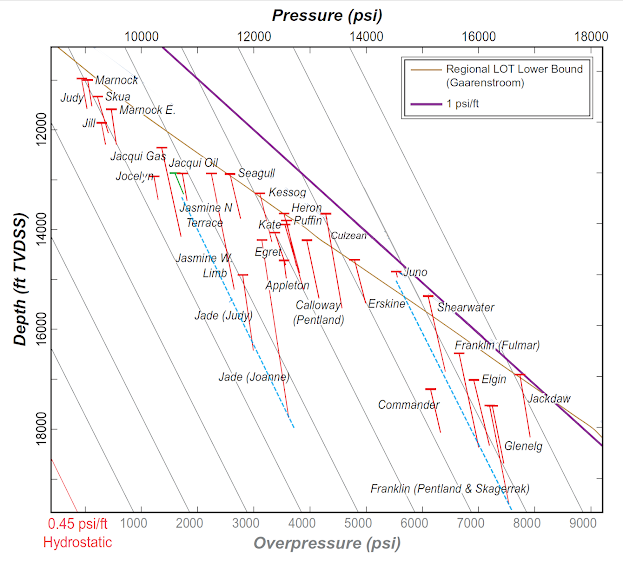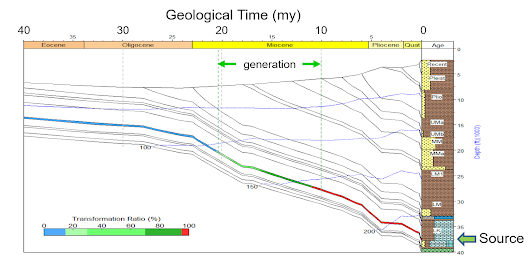First this paragraph from George Box on "All models are wrong", "Since all models are wrong the scientist cannot obtain a "correct" one by excessive elaboration. On the contrary following William of Occam he should seek an economical description of natural phenomena. Just as the ability to devise simple but evocative models is the signature of the great scientist so overelaboration and overparameterization is often the mark of mediocrity".
That does not prevent some scientists try to include every thing they believe they understand, then promote their models as "full physics", not knowing many things in nature are not well-understood, or understood at all. Not knowing what is importantly wrong, they selectively worry about minor things that has no implication to the problem at hand.
Are their models "full physics"? No, far from it. Basin modeling aims to model the physical/chemical/geological processes in hopes of better understanding these processes. However, we don't yet fully understand many of the processes, some important processes are obviously not accounted for in some basin models. Below I list some important physics that either are missing from current basin models, or are not correctly implemented. Hope this servers a reminder when you hear "full physics" marketing ploy again next time.
Migration modeling: Some Darcy flow migration models lack some well-known physics between saturation and capillary pressure, and as a result, oil accumulations occur in places without a trap (!!), or accumulations with unrealistic saturation distribution - Have you ever seen a 2km vertical HC water contact (??). Also note the total column of the trap is 3 km!! Has anyone ever seen it exist in nature?
 |
| Figure 1. Darcy migration model without proper physics between fluids and rock. Saturation distribution is very unrealistic, and geologically impossible. |
Wrong rifting heat flow: Some so called full physics models still have the wrong idea about rifting and heat flow. Below is a heat flow model (red curve) of an area with a beta factor of 2. Notice the heat flow started at 32 mW/m2 (which is a unrealistically too low for any continent, especially where this basin is - Australia which has one of the hottest crust!), and at the end of rifting it doubled, and then over the next 100 million years it cooled off to 36 mW/m2. What's wrong you may ask? It is wrong because the model does not account for the fact that crust produces more than half of the heat - so attenuation of the crust by rifting will cause loss of heat production. Because of that, the heat flow at present day should be lower than before rifting! But this model shows the opposite!
 |
| Figure 2. Rift heat flow history from a certain "full physics" model that does not account for the loss of radiogenic heat production (RHP) by crust attenuation from rifting. |
Compaction: The compaction model is an essential part of modeling burial history and over-pressuring. Current models assume a unique porosity-effective stress relationship that was first developed from soil mechanics. This is not appropriate as over geological time rocks are not elastic and continue to creep/lose porosity under the same load (effective stress), as evidenced by much lower porosity in older rocks, compaction curves correlate with formation age, etc. The immediate effect of not accounting for the effect of geological time is that it is very hard to maintain overpressure once loading stops, or with uplift and erosion. Almost all the unconventional plays have experienced uplift and still maintain significant overpressure.
HC expulsion fractionation: Some researchers attempt to use the composition of fluid generated by lab pyrolysis for the initial composition of fluid expelled from the source rock in basin models. This ignores the observation that fluids found in source rock extracts are VERY different from fluids produced from accumulations - many things are happening between generation and accumulation that are not accounted for in basin models. It is pretty obvious that heavier HC molecules are preferentially retained by source rock (perhaps due to preferential adsorption), so the expelled fluids are much lighter, and higher GOR. A good reference on this is this study by Sonnenfeld and Canter, 2016 Many of us recognize the problem, but we don't have the physics worked out.
Migration fractionation: At the typical depth petroleum fluid is generated, oil and/or gas are single phase. As migration of the fluid upward reaches bubble or dew point pressure, it separates into a vapor (gas) and liquid phase (oil). The two fluids now have very different composition - light liquid goes with the vapor phase, and the remaining liquid becomes lower GOR and lower gravity. In an oil dominated system - we find heavier, low GOR oil (than what was generated) in shallower reservoirs because of this. They are not what the source rock had generated. Same happens to gas systems. Migrating gas loses heaviest liquid first, so the remaining condensate gets lighter as the gas gets drier (higher GOR). See this post on observations. Loss of polar components along migration path due to adsorption on minerals has not been accounted for in models.
Even during early single phase migration, the effects of composition grading ( observed compositional gradient in accumulations) especially in near critical conditions, in a fill-spill trap is that the spilled fluid is lower GOR and lower gravity, that the total fluid in the trap.
This is not accounted for in basin models and it is not a good idea to think that basin models can predict fluid properties without accounting for this (thermodynamic) process.
Using Heat flow as boundary condition: Many modelers use heat flow as the boundary condition at the base of sediment for modeling the temperature history. This method ignores the effect of growing the sediment column has on heat flow itself. Adding sediment column moves the surface further away from the LAB (1300 °C). It lowers mantle heat flow by increasing dz in the equation Q = K*dT/dz. It also ignores the transient effect as the entire lithosphere now requires new equilibrium.
 |
| Figure 2. The effect of adding 1 km of sediment to the lithosphere column. The red arrows show temperature increase required for new equilibrium. It is often mentioned that the new sediments need to warm up. But we cannot ignore that the rest of the lithosphere (~100 times the rock volume of the new sediments) also needs to warm up, on average 15°C, for every 1000 m of new sediment. And that is going to take a much longer time. And you can see that the new profile is a lower thermal gradient and thus lower heat flow. |
Full lithosphere models show that rapid burial can reduce heat flow by 30% in some cases, depending on burial rate. This is physics that can be modeled correctly, but not if we assume some "basal heat flow" through time independent of the physics. To account for this physics, a proper thermal model should use a boundary condition at the base of lithosphere.
Relationships: Many of the functions, relationships used in basin models are empirical - which is not physics. A simple example is the permeability-porosity relationship below. There is no direct relationship between the two physically. Permeability varies by several orders of magnitude at the same porosity - even for the same rock type, same formation etc. Empirical models can be useful in many ways, but the uncertainty cannot be ignored - but basin models often use these relationship to model fluid flow, pressure prediction and HC migration without addressing the huge uncertainty.
 |
| Relationship between porosity and permeability for porous rocks- modified from Ma and Morrow, 1996, |
Upscaling: Due to limited computation power, cellular basin models use grid cells on the order of 10s to 100s of meters in thickness. If we take a look at 100 m worth of well-log, or outcrop, how often it is entirely homogeneous ? I think you can imagine petroleum migration thorough a homogeneous rock volume is entirely different from some sand-shale interbeds. I have not seen any published attempt at upscaling Sw-Pc curves of interbedded different rock types.
We simply don't' have enough data for migration modeling. A parallel problem is that seismic does not have the resolution for mapping the plumbing system to which the physics apply, for us to upscale from, not even close. We don't actually know the number of interbeds and their lateral distribution from the standard seismic interpretation - let alone all the properties of these rocks, such as the different Sw-Pc curves for each type. Well that is even if you model actually implemented a Sw-Pc relationship in the first place. If you are interested in this topic, you may want to look up the concepts of the Leverett-J function and FZI and HFU.
Biogenic gas: The formation of biogenic gas is not well understood - especially when it comes to quantifying the volume. That does not stop vendors from making up a model for you (and charge you a lot of money for it). The current model assumes that the process of biogenic gas generation consumes part of kerogen - and asks you to input some equivalent TOC and a convertible fraction that is the source for biogenic gas. Well - that is not physics - the volume you are getting from these models are based on assumptions, so it is no different than you are assuming you know how much gas is generated per volume of rock - it is not based on any real science!
Assumptions, assumptions: Many assumptions are made in the traditional basin modeling, often an assumption is made just because we don't know it well not because it is insignificant. Yet we will forget that assumption when we discuss the result of the model. I will add some examples later.
Conclusion: Don't be fooled by a fancy colorful 3D model, its usually not very useful. We actually don't need a full physics mode, we need something simple but when applied can answer important questions in exploration quickly.































